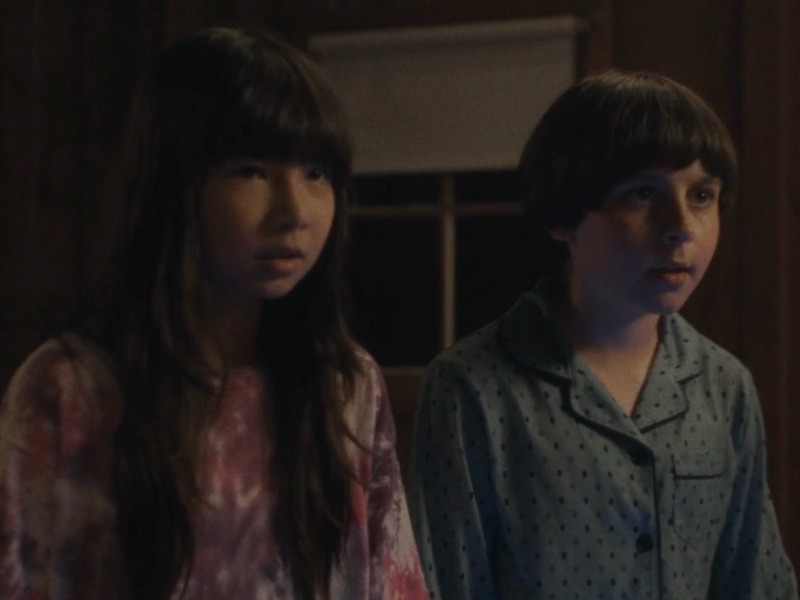Marshmallow (2025) mixes nostalgic summer-camp horror with an unexpected sci-fi twist, creating an eerie experience that starts with promise but ultimately melts into uneven execution. Directed by Daniel DelPurgatorio and written by Andy Greskoviak, this 93-minute horror sci-fi blend tries to explore deep questions of existence through the lens of a campfire story gone wrong.
The Premise
Set in a secluded summer camp, the film follows a group of young campers who stumble upon something far more sinister than ghost stories. After a counselor recounts a long-forgotten campfire tale about a vanished doctor who once experimented in the woods, strange things start happening. What begins as a nostalgic summer retreat quickly turns into a fight for survival as reality itself starts to blur.
Hints of an existential mystery creep into the narrative when the children discover that their reality might not be what it seems. This conceptual twist—while bold—is where Marshmallow attempts to rise above its surface-level scares but instead risks losing its grounding. It’s part Friday the 13th, part Black Mirror, but without the cohesion of either.
Performances and Characters
The young ensemble, led by Kue Lawrence, Kai Cech, and Max Malas, delivers energetic and believable performances, balancing fear and curiosity in equal measure. Their camaraderie adds warmth to the otherwise chilling story. Giorgia Whigham as Rachel and Pierson Fode as Kaszwar anchor the adult cast, with Corbin Bernsen lending gravitas as the mysterious Roy.
Unfortunately, the script often undercuts their performances. Emotional arcs start strong—especially with the shy and nervous protagonist—but fade into underwritten dialogue as the sci-fi elements take over. Several reviewers noted that despite a compelling setup, the characters’ development stalls just when the story should matter most.
Direction and Atmosphere
DelPurgatorio successfully cultivates a classic camp horror atmosphere, complete with misty lakes, creaky cabins, and eerie bonfires. The cinematography captures the beauty of the Kentucky campground where the film was shot, using muted colors that evoke a sense of dreamy isolation. However, once the film’s tone shifts from horror to science fiction, it loses focus. The pacing slows, tension drops, and the visual clarity becomes muddled by overexposed lighting and inconsistent tone.
The sound design, on the other hand, is a frequent criticism among viewers. The overwhelming screeches and over-amplified jump-scare noises often distract from key moments of suspense. It’s a case where more restraint could have elevated the mood rather than overwhelmed it.
Story Execution and Themes
Marshmallow deserves credit for trying something ambitious. The movie’s mid-story reveal transforms it from a summer-camp story into a reflection on identity, fear, and the fragility of reality. Unfortunately, the execution doesn’t fully deliver. The existential twist—a revelation that challenges the characters’ understanding of what’s real—is fascinating in theory but rushed in presentation.
Thematically, it gestures toward grief, control, and perception, echoing works like The Endless or Coherence. Yet, it lacks the emotional depth or narrative structure that would have made its philosophical angle resonate. By the time the ending arrives, many viewers felt it was more confusing than thought-provoking.
Overall Impression
Despite its flaws, Marshmallow has moments of genuine tension and undeniable style. The camp anxiety, the folklore setup, and the atmospheric world-building all work in its favor. It’s the latter half—bogged down by over-explanation and uneven tone—that prevents it from realizing its potential.
There’s enough creativity to suggest that with tighter editing and a more confident commitment to either horror or sci-fi, it could have been a cult favorite. As it stands, Marshmallow is a film of wasted potential—an intriguing idea that never gets to fully roast over the fire.
Rating: 5/5
